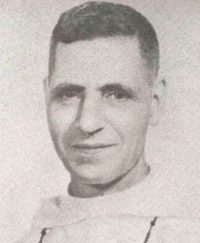I had thought of touching on this theme several times, but for lack of data, I had to delay doing so. We knew a few details, loose ends gathered here and there, but we lacked an overall view of the new economic organization implanted by the new economists. Neither the civil nor the military government seem to be interested in making this matter public. Rather, they apparently prefer to leave us in ignorance.
We can, at most, assume this fact—or postulate—as a starting point: that the Philippines, while under the domination of the Americans, was an enemy of Japan against which she fought and for which she was invaded and conquered. Having been dominated, the Philippines has to pay the costs and damages of war. How will Japan ever recover such costs? As Japan has not officially imposed on the Philippines a share in the cost of war, nor indemnification, nor contribution to support the Occupation Army, what economic system would she install to recover such expenses?
All the economic activities are being manipulated by the super administrators from behind the curtain. Both the manipulators and the strings are invisible but the public knows that the actors are mere cardboard puppets manipulated by unseen strings.
Some economic advantages have obviously been obtained by the conquerors. Their most abundant sources of revenue are the stores and warehouses of the more valuable wholesale business establishments. Only the Japanese know the value of the spoils of war. If to these were added the number of trucks, cars and other motor vehicles confiscated, the amount would reach some ₱500,000,000.00.
With regard to the banking establishments, one fact is that when Sto. Domingo was being bombed last December 27, the banks, by order of the Military, loaded their deposits for transfer into a motor boat to Corregidor. Could it be that the Japanese got wind of this move and therefore bombed the river and Intramuros?
After the fall of Corregidor, Radio San Francisco announced that sometime in the middle of February, an American submarine succeeded in going through the Japanese line and reaching the island to bring provisions for the defending army. It left Corregidor with the bank money, allegedly amounting to some sixty million. The rest must have been dumped into the sea.
The Bank of the Philippine Islands has only some six hundred thousand pesos left in its vaults. The amounts left in the other banks are not known, but they were more or less around the same amount. The Japanese therefore found the vaults of the banks and of the National Treasury virtually empty.
Naturally, not all the money had been deposited in the banks. The money which is still in private hands amounts to millions. The conquerors, badly in need of metal, have tried to gather all the money, so much so that, after the Japanese entry, coins became scarce.
Meralco, an American firm, was commandeered, and all the coins which were confiscated therefrom were never put back in circulation. Streetcar conductors became short of coins for change, until tickets were issued for the purpose. The NARIC started rationing rice, demanding coins as payment. Finally, denominations disappeared, until paper money was issued.
The Japanese suspect that the people are hoarding the coins. Banks have therefore been ordered to hold back small paper denominations to force the people to spend their coins.
